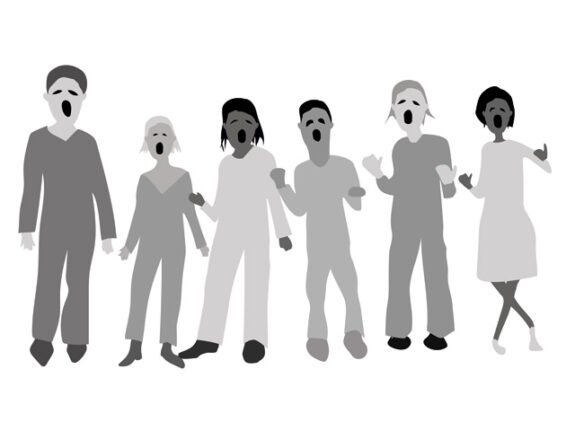
Chorus
In speech and language therapy and at home
Logic in nonsense
In many cultures, traditional songs often have a chorus, like: “Knick, knack, paddy whack, give a dog a bone, this old man comes rolling home” or “La di da da” or the Beatles’ “Yeah, yeah, yeah” or “E – I – E – I – O”.
If the sound structure of language is hard for children, as it clearly and obviously is, the chorus of a song is a bit of fun. It epitomises in one or more ways fundamental properties of the language. For instance, knick knack exemplifies one common pattern of doubling or ‘reduplication’ in English where the only variation is the vowel. Paddy whack repeats the stressed vowel, but contrasts the simplest metrical foot in paddy with the plain syllable in whack. In Give a dog a bone, this old man comes rolling home, the OH diphthong is repeated four times, in bone, old, rolling and home. Most simply of all E – I – E – I – O rehearses two diphthongs in I and O and another long vowel in E.
With children who have problems with the sound structures of English, these principles can be put to use. Singing songs is fun. You can even make up your own. If your child laughs, so much the better.
Rhyming is reflected in verse from Chaucer to Shakespeare to the work of Roald Dahl to rap. At the time of Geoffrey Chaucer 600 years ago, chamber, gander, and wander, all rhymed with one another, at least approximately, as did spoon and fun. But the nursery rhymes which feature these words don’t rhyme any more because of changes in the vowel system over the last 600 years, most of these changes between the times of Chaucer and Shakespeare.
Nursery rhymes are what they are for a good reason.

